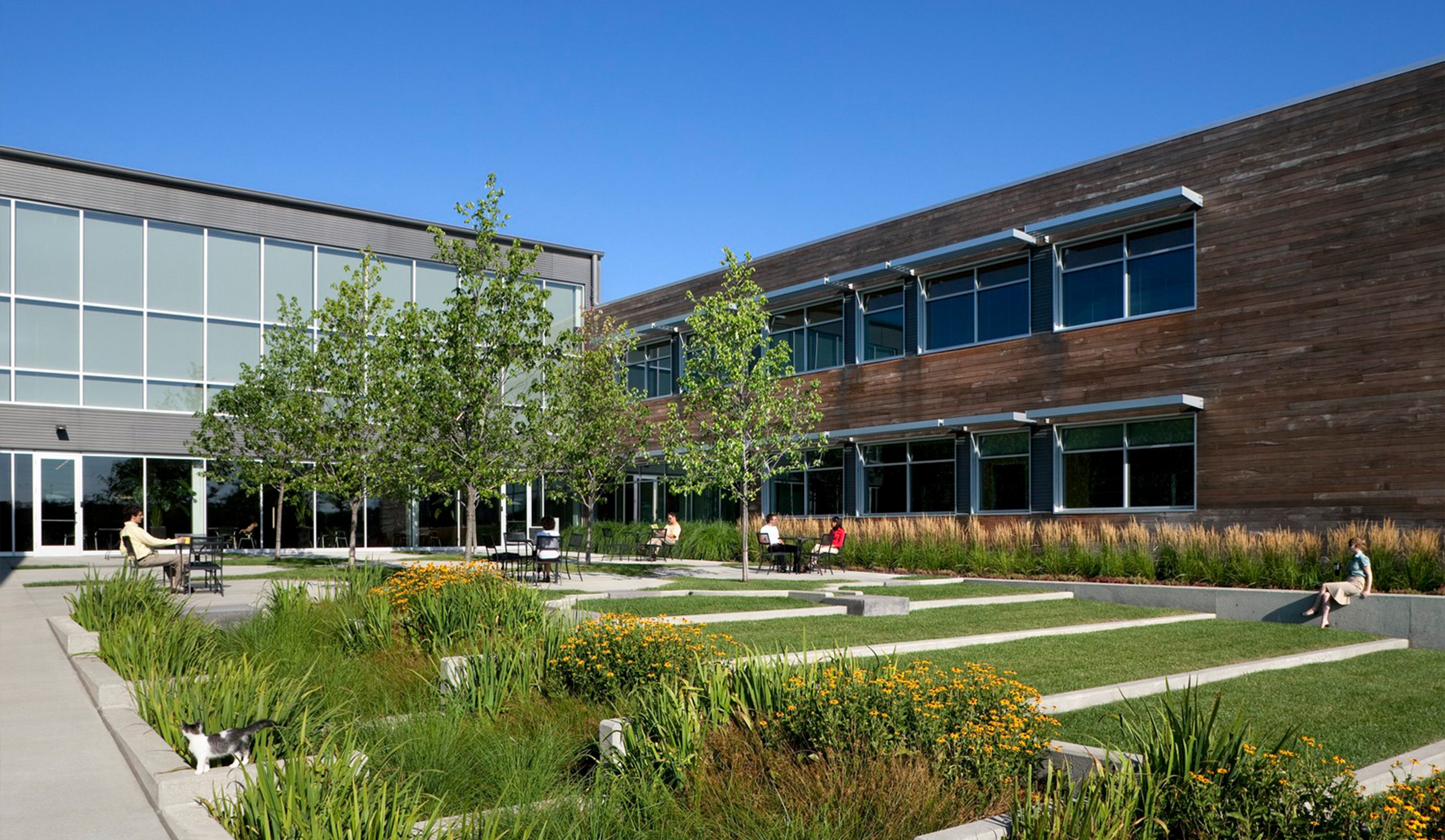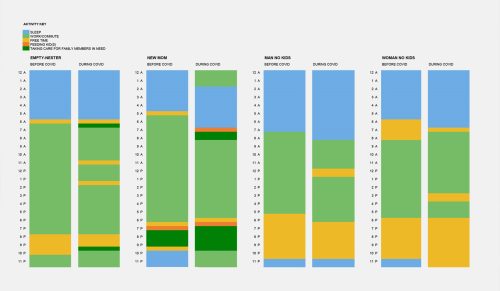
The Air We Breathe: Importance of Internal Air Control Barriers in Building Enclosures
In an online seminar at the end of January, I was reminded of a very important reason why detailing the gypsum board finish as an internal air control barrier, is an important part of our building enclosure strategy.
I think it was the early 2000s when I became aware of this practice, while working on a corporate headquarters project. We were designing the wall assembly, which at the time was very unusual for the Kansas City market. The wall assembly was:
- A wood rainscreen cladding;
- with exterior mineral wool insulation;
- a vapor impermeable air barrier on the outside of glass matt sheathing;
- fiberglass batt insulation in the metal stud cavity and an interior gypsum board finish.
Since we were using an impermeable air barrier, we needed to balance the thermal resistance of the exterior and interior insulation, being especially careful to keep the interior wall cavity side of the sheathing, the condensation plane, warm. That way if moisture made it into the wall cavity it would not condense and become a problem.
In addition to keeping the condensation plane warm, the practice we used to reduce the risk of moisture entering the wall cavity was making the interior gypsum board finish double as an internal air control barrier. All framed wall cavities have convection air flow and if moisture laden air makes its way into a wall cavity, it will travel great distances and find the imperfections in the construction assembly, the coldest places, to condense. This internal air barrier helps to prevent moisture laden air from making its way past the electrical receptacles and wall joints and into the wall cavity. No moisture, no condensation. The gypsum board is vapor permeable so if/when some small amount of moisture makes its way into the wall cavity it will allow drying to the building interior.
This practice is important to the success of our enclosure assemblies. However, there is another related and equally important reason I was reminded of. In the seminar, the presenter Joe Lstiburek of Building Science Corporation, discussed 3-dimensional air flow in buildings and how complex the interconnected air flow networks are, and how difficult, if not impossible, they are to isolate from one another. He pointed out that one big reason we separate wall and roof cavities (yes, roof cavities) from the building interior, is to prevent all of the wonderful stuff in those cavities, or under the worst circumstances, that grow in those cavities from mixing with the indoor air we breathe and becoming an indoor air quality issue. Think of what’s in those cavities; materials such as insulation, sealants and adhesives that give off gas chemicals, construction dust, big gulp cups, the occasional burger wrapper or potato chip bag.
There is language in our specifications that requires VOC and chemical limitations for materials within the weatherproofing system. Back up walls and most often the roof cavities are within the weather proofing system. Although materials have greatly improved over time, there are still contaminates we want to keep out of the indoor air as much as possible. Existing materials in old building renovations can be especially challenging. Joe pointed out that when enclosure assemblies are exposed to solar load and heat up, sometimes significantly in the case of a black roof, the heat causes materials to off gas contaminates and drives the air to the building interior, if there is a path. The gypsum board air barrier works both ways, helping to keep moisture out of the wall and contaminates in the wall. For roof assemblies, although a gypsum board layer can work as an air barrier, it is time consuming and costly to install and given the large number of fasteners that will be driven through, it not likely to remain airtight. We instead use a peal and stick membrane. No, a metal deck is not an air barrier.
So, as you are detailing or administering construction on your next project think about how important the interior air control barrier is to the success of the building enclosure and indoor air quality.

